#sailor moon manga captures
Explore tagged Tumblr posts
Text
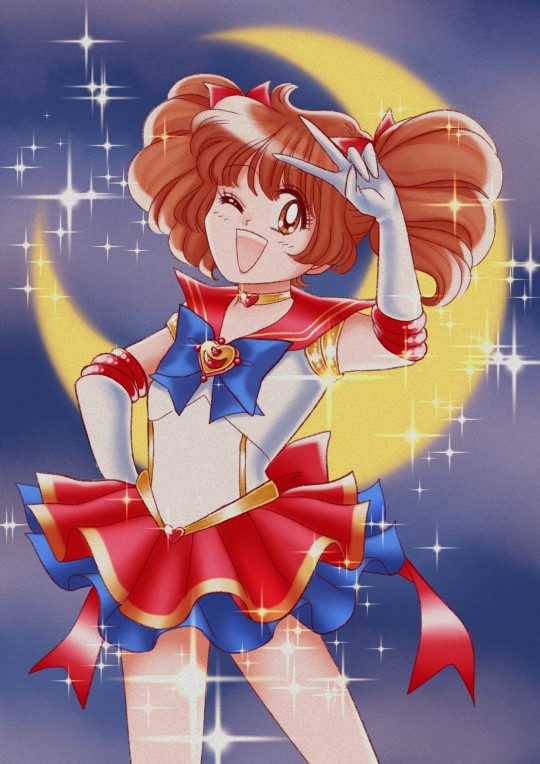
Look drawing in Naoko Takeuchi's artstyle and trying to imitate her manga covers makes me happy ok
#I specifically based this off of Chibiusa's manga cover for volume 6#I like this more than the Eiko illustration from November... might draw her again#as proud as I still am of that piece I think I captured Naoko's style better in this one#adagiorii oc#oc#fan senshi#oc art#oc sanako#digital art#digital artist#my artwork#drawing#my art#artwork#art#artists on tumblr#oc artist#oc artwork#illustration#sailor moon#sailor moon art#sailor moon au#bishoujo senshi sailor moon#senshi oc#sorry for flooding the tags lmao-
156 notes
·
View notes
Text
Rei is a completely different character in Sailor Moon 90s vs Crystal. You cannot convince me those are supposed to be the same person.
#i mean both are charming in their own way but yeah like completely different characters#I’d actually say I that recasting Rei’s VA was a good idea. Michie Tomizawa was perfect for the 90s tone/mode#but Rina Satou really captures Rei’s character in the manga/crystal#tangentially related but its kinda funny how Junichi Sato’s favourite (non usagi) sailor was definitely Rei but Naoko’s was totally Minako#sailor moon
4 notes
·
View notes
Note
You said you were a super fan of Sailor Moon, could you give your opinion about the 90s and Crystal adaptations? There's a lot of debate about which one is the best, honestly I think both have their positive points...although personally the 90s one will have a special place in my heart 💖
Crystal definitely had a rough start since it was just...so UGLY! DX I'm sorry but that's the only way to describe it, the 3D models were bad, the animation was bad, the drawings were bad, it was bad! So despite being the more faithful adaptation, it was a hard watch at first.
Luckily, Crystal can now stand on it's own and is actually quite beautiful. It really captures the melodrama from the original manga while being less visually confusing and easy to follow. If you're a fan of the manga, definitely give Crystal a go.
I too have a nostalgia attachment to the 90s dub and the 90s animation is the one that I'm collecting the full season of, so it is definitely the one that I prefer. I do really like that the redub and Crystal use the same voice actors, so all the VAs get to experience the different versions of their characters.
As a kid, I really only watched whatever random episode was on tv, whatever random video blockbuster had, or the movies, but I was still really attached to 90s Sailor Moon. Now I'm currently going through and watching every episode. Pray for me, I'm at Season 3: Sailor Moon S.
#I really can't tell you which is 'better' since they both have their points#and I'm fully biased towards the 90s version#I even love all the dumb filler lol#tho binging whole seasons does make me think damian/mamoru is a freaking idiot lmao#'oh a voice from nowhere told me bad things would happen so I should break up with my girlfriend and treat her like shit for no reason'#how about? no??
216 notes
·
View notes
Text
Comic Book Review: Runaways by Rainbow Rowell
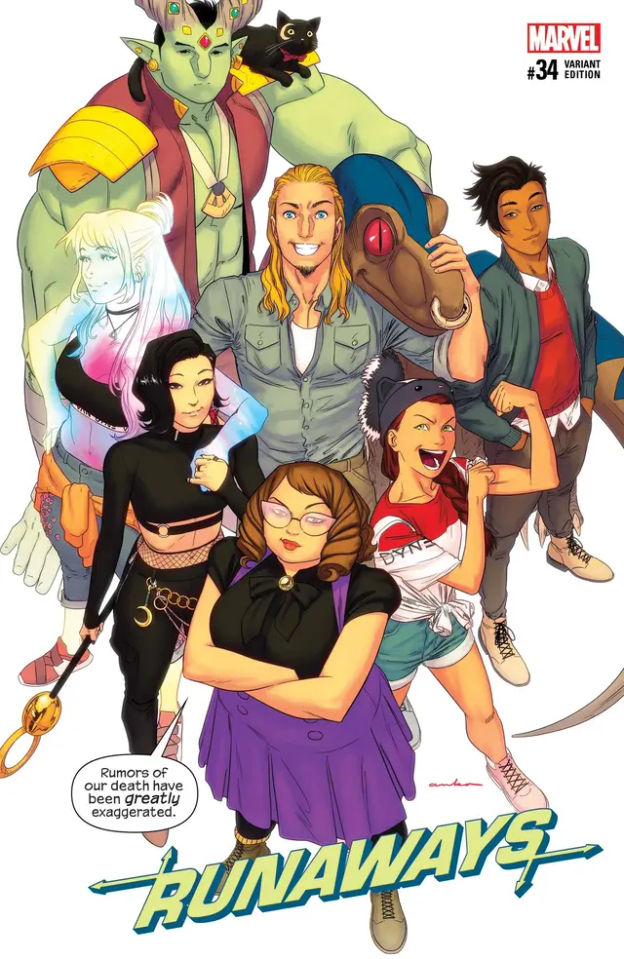
Hello, all. Today I will be taking some time to discuss a comic book I enjoy. This is the first in what will hopefully become a series of long-form comic book reviews I'll be writing for this blog as I continue working through my backlog of unread comics as well as ones I'm rereading, both on my own and through me and @bimboficationblues' book club.
I first read the original run of Runaways in digest trade paperback format at my local library when I was in middle school, and the book hit me at the exact right time, since I was pretty firmly the book's target demographic - young, restless, and beginning to grow resentful of the adult authorities in my life. I never read the 2017 revival, as I was not reading comics when I was in high school and college, but I was at my local library - a different one, I don't live in Texas anymore - while waiting for the power in my apartment to come back on due to an outage, and discovered that they carried the full series in trade paperback. I decided to check it out and see how it held up to the original run, and found myself pleasantly surprised by how much I liked it - enough, clearly, to make this post. I'll get into more detail about the 2017 book later in this post, but I'd like to first give an overview of the original series to provide some context for how this book came to be, since it's quite a niche, cult-classic book as far as Marvel titles go.
Part One: Born to Run
At the turn of the century, comic books faced a number of problems. The bottom had fallen out of the industry in the early 1990s due to the burst of the speculator bubble, sending shockwaves that continued to reverberate into the early 2000s. Marvel Comics had nearly been bankrupted and stripped for parts, surviving only by the skin of its teeth, and was only just getting back on its feet. But now, another threat was looming: anime and manga. Imported comics from Japan were beginning to capture a larger and larger market share of comics sold in the United States, fueled by the popularity of Dragon Ball, Sailor Moon, and others on television. Marvel sought to fight back by producing books which would appeal to young fans of these Japanese imports and act as gateway drugs into more standard Marvel fare. Their first effort came in 2000 with the utterly embarrassing Marvel Mangaverse, a group of books which copied superficial and stereotypical aesthetics of manga, without any of the substance.
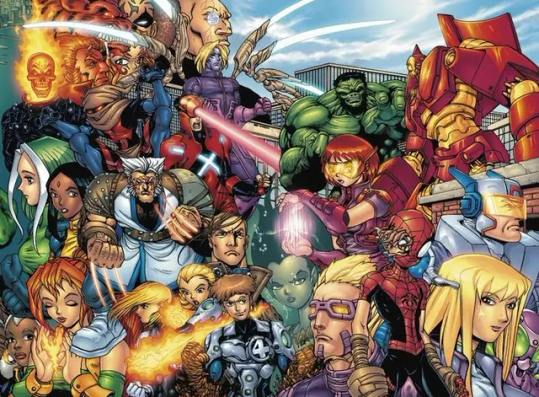
Just look at this shit, man. Anyway, in 2003, Marvel tried a different approach with their Tsunami imprint. The books in this imprint would also employ art styles that reflected the influence of anime and manga, but would feature character-driven, in-continuity storylines aimed at a variety of age ranges. Among the titles Tsunami would publish was a book written by Brian K. Vaughn (known at the time mainly for his work at DC's Vertigo imprint, including a run on Swamp Thing and his own Y: The Last Man) and illustrated by Adrian Alphona (who would go on to co-develop Kamala Khan with G. Willow Wilson) titled Runaways.
The initial premise of Runaways was really quite brilliant in its simplicity: Alex Wilder, Nico Minoru, Chase Stein, Gertrude Yorkes, Molly Hayes, and Karolina Dean are casual friends bound together mainly because their parents are all friends - actors, engineers, lawyers, and influential people in the Los Angeles area - who gather once a year for a charity event.
As the kids are left bored and alone while their parents meet at Alex's house in Malibu, they find a secret passage and are able to observe their parents at the meeting, learning that, in truth, their parents are a group of supervillains known as the Pride, who control crime and vice in Los Angeles, and who conduct human sacrifices in arcane rituals.
As the kids attempt to discover more about their parents in order to find evidence to bring to the police, they each begin to discover unique powers and abilities: Gertrude has a psychic link with a genetically-engineered deinonychus, Karolina is a light-powered alien with the ability to fly, Molly is a super-strong, super-tough mutant, Chase gains access to powerful technology created by his parents, and Nico is able to summon a magical focus known as the Staff of One when she bleeds, which she can use to cast powerful magical spells, with the catch that she can never cast the same spell twice. Alex, with a genius strategic mind, becomes the group's leader, and with the group learning that the police in LA belong to the Pride, they run away from home and drop off the grid in order to find a way to put a stop to them.

The first volume of Runaways chronicles the kids' conflict with their parents, as well as run-ins with a vampire named Topher and Marvel's original runaway teen superheroes, Cloak and Dagger. Eventually, they learn that their parents were gathered to serve godlike giants called the Gibborim and conduct a ritual which would wipe out all life on Earth, save for six of the Pride - or more specifically, their heirs, the children. The volume ends with the team's climactic confrontation with their parents, as they begin the ritual to end the world, with Alex revealing himself to be a mole in the group and having secretly been on the side of the Pride all along. After Molly disrupts the ritual, the Gibborim arrive and vaporize Alex and kill the Pride, with the kids barely managing to escape. In the aftermath, the kids are placed into foster care, which they promptly run away from, becoming teenage fugitives once again.
The first volume of Runaways lasted only 18 issues, but sales of the digest format trade paperbacks (another thing copied from how manga is distributed in the US) proved so strong that a second volume began publication in 2005, featuring the same creative team. This volume saw the kids continue to evade the police, adult superheroes, and social services. Along the way, they recruit a few new runaways, including Victor Mancha, a cyborg built by the Avengers villain Ultron, and Xavin, a shapeshifting, genderfluid Skrull who imposes themself upon the group as Karolina's fiancee due to a marriage arranged by her parents. They also take a trip to New York City to help clear Cloak's name when he's accused of attempting to murder Dagger. There, they come into conflict with the Avengers, and get sushi with Spider-Man.

Over the course of the second volume, Gertrude is killed in a fight with a reformed Pride made up of a time-displaced version of Alex's father and his MMO friends, and Vaughn's run on the title ends with a story in which Chase, who is grief-stricken after her death, makes a deal with the Gibborim in order to bring her back in exchange for a sacrifice. The deal falls through, and the kids are forced to fight the gods that their parents once served, ultimately managing to defeat and erase the Gibborim from existence.
After Vaughn left the book, unfortunately, Runaways started a long period of decline. He was replaced as writer on the book by Joss Whedon, who penned a couple middling stories, including one where the kids fight the Punisher and the Kingpin, and another where they're flung back in time to 1907 New York, where they recruit the final member of the team, a young mutant and child bride named Klara Prast who can make the flowers grow. Yawn. Volume 2 of Runaways ended with issue 30, and the book was relaunched with a new #1 in 2008, this time with the creative team of Terry Moore (best known for his indie book Strangers in Paradise) and Humberto Ramos (a veritable workhorse whose portfolio speaks for itself, particularly his work on Spider-Man). This brief, forgettable run was followed by a fill-in issue or two by Christopher Yost, and then a final, mediocre arc by Kathryn Immonen which ended the series abruptly on a cliffhanger.
After this, the wilderness years. Characters from Runaways appeared with some regularity - Nico, Chase, and Victor all played major roles in various Avengers spinoff books, none of which suited them particularly well - although in the pages of Avengers AI, Victor would forge a friendship with a reprogrammed Doombot which would play a role later. Mostly, though, it became clear over the years that these characters did not work in normal superhero books, because they were not normal superheroes - they were Runaways. Part of the problem the book had come to face in the later years was a failure to understand that point. The Vaughn run had proven the potential of the characters and concept of the Runaways - they needed a writer who understood that potential, and how to bring it out - and they could have a renaissance.
Then, in 2017, a Runaways TV show premiered on Hulu, to tie into the Marvel Cinematic Universe, and Marvel, for the most cynical and synergistic of reasons, decided to give them that renaissance.
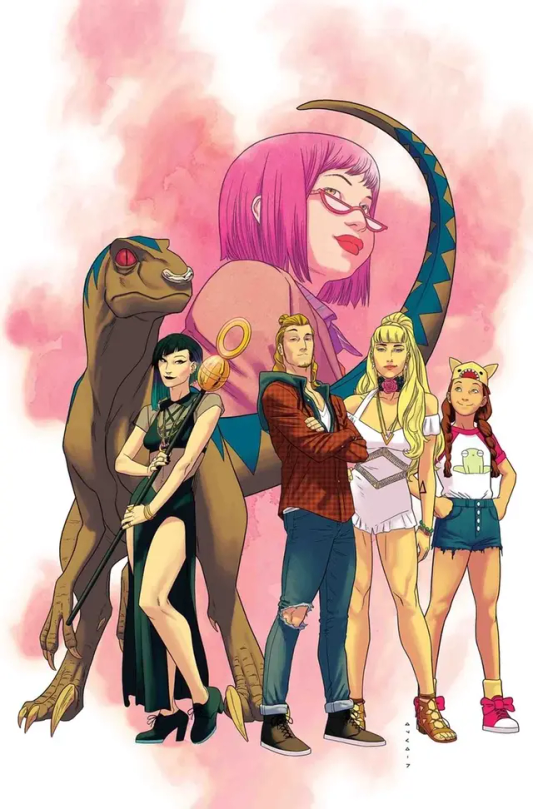
Part Two: It's Only Teenage Wasteland
Runaways volume 5 (volume 4 was an unrelated Secret Wars tie-in) is written throughought by Rainbow Rowell. Rowell's background is in contemporary young adult fiction, which isn't usually my cup of tea, but translates very well to this comic. Runaways, at its core, is not a superhero book- a point which will be made more explicitly later in the series - it is a teen drama with superpowers. Angst, sexual tension, and resentment of authority are all key elements of the series, which Rowell employs effectively throughout. Joining her on art for the initial run of the volume is Kris Anka, who would later go on to be the lead character designer for Spider-Man: Across the Spider-Verse. Anka's art is colorful and expressive and complements the tone of the series brilliantly. It's probably the best Runaways has ever looked. Of particular note are the outfits Anka designs for the characters, which change from issue to issue and help to characterize each Runaway visually.
The book picks up with the Runaways having split up, with Molly living with her grandmother, Victor having been reduced to an inert, deactivated head following his apparent death in Avengers AI, Karolina in college and dating Julie Power of Power Pack, Klara in foster care, Xavin in space, and Nico in a shitty LA apartment after a brief stint with the all-female A-Force. The inciting incident of the book occurs when Chase appears with a time machine, having recovered the dying Gert from the events of volume 2. Nico is able to use her magic to save Gert's life, and she wastes little time pushing to get the rest of the gang back together.
Of course, two years have passed since Gert died in-universe. Karolina, Nico, and Chase are all adults now, and Molly is a teenager now, happily living with her grandmother. Things changed while Gert was away, and there's no way to go back to the way things used to be.

The first arc of the book establishes some core themes which will continue to be relevant for the rest of its run: change, growing up, and family bonds. Gert is the heart of the book, despite her vociferous denials of that being her role. She is the driving force behind reuniting the Runaways, and her character is explored in this book more than it ever was in the Vaughn run - her negative self-image, which she hides behind an acid tongue, is a recurring focus. Of note is a scene where she discovers that her purple hair, which had previously set her apart and helped her to feel as if there was something special about her, has become a common fashion statement in the time she spent being dead. Her relationship with Chase is also examined - the age gap that now exists between them precludes any resumption of dating, and she eventually gets together with Victor - but Chase still loves her despite himself, and holds out hope that things can change when Gert gets older and the age gap is less of an issue. It's a little creepy, but psychologically understandable, as is his giving into temptation when a future version of Gert appears and practically throws herself at him.
Rowell's focus on character is central to what makes the book work. There are few titanic threats and fewer supervillains; the drama in Rowell's Runaways is driven by the characters and their relationships to one another, which are given a fresh perspective due to the characters having aged and grown since the previous volume of the series. Molly struggles with the idea of growing up and having to face adult fears and responsibilities, especially when her best friend in middle school offers her a way to stay young forever. Nico struggles with the feelings she's realized for Karolina - picking back up a plot thread from Xavin's introductory arc - as Karolina struggles balancing university, supporting the Runaways, and being a good girlfriend, failing at the latter as Julie breaks up with her - but in the process allowing her and Nico to finally have the right timing.

Also complicating matters are Victor's Doombot friend, who becomes a recurring character and joins the main cast in the back half of the series, and Alex Wilder, who has returned as a living corpse, with the children of the Gibborim on his heels. Rowell's portrayal of Alex is one of the series' most interesting aspects, as a young man burdened by his past mistakes and whose inability to acknowledge or account for them prevents any reconciliation with his one-time friends, and leads him to continue making the same mistakes over again. The only bond with the group he is able to maintain is with Molly, the only other Runaway who still misses her parents, and they have some very sweet interactions in a spotlight issue which serves as a look at what things could be like if Alex was willing to own up and atone for how he's hurt the others. His arc is left unresolved, though, for reasons we'll get more into in a bit. Doombot, meanwhile, has a brief storyline in which he comes to grips with his sense of individuality separate from the programming he was given by Doctor Doom, but other than that his primary role in the series is to serve as a caretaker, of sorts, to the kids, as well as a source of consistent comic relief.
That's another thing about this series: it's very funny! Much of the humor is character- and interaction-based, which is very much my style of humor in comics, but there's also some really nice sight gags and creative use of lettering and sound effects to create jokes. A lot of the humor in the original series can be hit-or-miss, in particular a lot of the more dated references, so the humor in this volume is a refreshing change of pace.
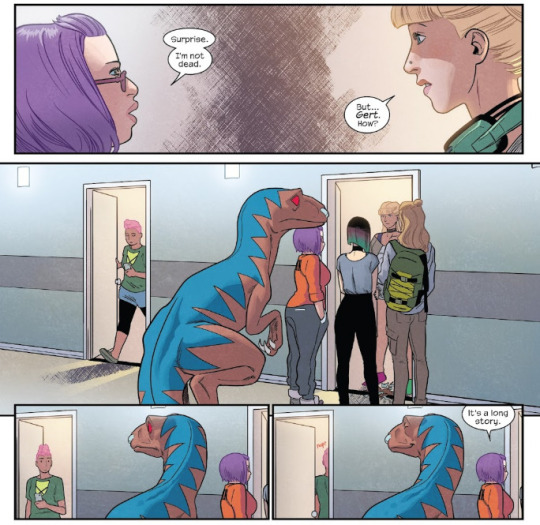
Following the fight with the children of the Gibborim - one of whom, Gib, sides with the group and becomes their newest member - the series enters its midpoint, in which Karolina drops out of college and begins moonlighting as a superhero as an unhealthy outlet for her anxiety, which ultimately ends up dragging the other Runaways into the orbit of Doc Justice, one of Los Angeles' premier superheroes, who outfits and equips the group as his new J-Team. I'm conflicted on this arc for a few reasons. The first is that it interrupts what I felt was an interesting arc for Karolina using superheroics as a coping mechanism, which I felt wasn't explored fully before Doc Justice showed up. On the other hand, though, the arc really gives Gert the spotlight after some time of having it off of her, and she's really able to shine as the one Runaway excluded by Doc Justice due to her weight and lack of powers, both key elements of her own negative self-image which haven't gotten a lot of focus since the early arcs of the series. Further, the arc serves to drive home the point that the Runaways are not superheroes and that Runaways is not a superhero book in the traditional sense. Seeing everyone in spandex and responding to distress calls just feels wrong. And Doc Justice is a great villain for the series: a conceited superhero obsessed with fame and media attention, who has systematically arranged the deaths of various teammates over the years in order to maximize sympathy and publicity. It's all very Hollywood. The ultimate downside of the Doc Justice arc, I think, is that after it's done, the series only has seven issues left. The eternal curse of Runaways, to have each volume cut too short, rears its head once again, and in using one of its final arcs to make a meta-commentary on the series as a whole, it sacrifices some opportunities for the character interactions and interpersonal drama that really make the book shine.
The final arc makes an effort to pivot back to that interpersonal drama, including a delightfully fucked-up romance between Chase and a future version of Gert who has traveled back in time to supposedly save him from himself, which blows up as you might it imagine it would once present Gert and Victor stumble across them. There's also a plot thread of Molly, Chase, and Nico helping a visiting Wolverine and Pixie track down a mutant who sent a distress message, in which Nico very nearly kisses Pixie due to her established character flaw of getting caught up in the moment, and it seems like she and Karolina are going to have an honest conversation about it - only for the conversation to instead be about the frankly much less interesting conflict Nico has been facing about the evil sorcerer whose spirit is housed in the Staff of One, and who is taking a piece of her soul every time she casts a spell. It's a conflict that could be interesting if more focus was placed upon it, but it's the subject of one issue prior to this and the end of the series means that it ends up going nowhere beyond Nico entrusting Karolina with the staff in the end. That's a major flaw in this run, though one that isn't entirely its own fault - its abrupt end means plot threads, like future Gert's abduction of Chase, Nico's conflict with the spirit of the Staff of One, and Alex's usurpation of the Doc Justice mantle, are left hanging.

It really is unfortunate, and makes the time spent on the Doc Justice arc, which probably could have taken four issues instead of a frankly indulgent seven, feel even more egregious and unnecessary with hindsight. This series has a leisurely pace, which is good when it allows character interactions and dynamics to stretch out and have maximum impact, but it also means that at the end, when everything has to wrap up relatively quickly due to the amount of time taken in previous arcs, there's a disorienting and frantic energy, like trying to get your room cleaned five minutes before your parents get home. In particular, the last issue crams a ton of stuff in, to an exhausting degree - Karolina summons her people to take her into space and treat her for injuries she sustained in Doc Justice's efforts to martyr her, future Gert enacts her plan to kidnap Chase into the timestream, Gert's time traveling parents show up for some reason, Alex is surveilling the team for reasons unknown, Xavin is now a general of Karolina's people... it's a lot to leave on a cliffhanger.
Rowell's Runaways is a good book, and I do recommend it, either on its own or, preferably, after reading the original 2000s run. It does a great job of moving the characters forward, maturing them, and giving them more adult problems to deal with, while maintaining the series' core themes of identity, questioning authority, and anxiety towards adulthood. It simply doesn't have enough issues left at the end to resolve all of its plot threads, and that is what ultimately holds it back from being great. 38 issues is a good run, better than any volume of Runaways before it was able to achieve, but its pacing choices and the number of plates it attempts to keep in the air leave the reader wanting more.
But, to its credit, it succeeds in making me really care about what that "more" could be.

Part Three: Run Away With Me
Volume 5 of Runaways ended with issue 38, cover date October 2021. It outlasted the TV show it was meant to tie in with by two years - a TV show that was eventually pulled from streaming as a cost-cutting measure. In the years since the series concluded, not much has been happening in that corner of the Marvel Universe. The characters have made few, if any, appearances, and there's been no talk of a sixth volume, despite the plot threads left hanging.
Well, that sucks, you know? Runaways is such a unique series with such a special voice and perspective in superhero comics, and it deserves a place in Marvel's publication roster as much as the millionth Spider-Man or X-Men spinoff does. It has never sold spectacularly, but it has an audience and, crucially, has always been good for its originally intended purpose: giving Marvel a backdoor into the teen and young adult market that has for decades now largely eschewed comic books. Manga sales now account for nearly half of all comics sold in the United States, and while Marvel now mainly serves as an IP farm for adaptation into the much more lucrative MCU, I think there's value in a series like Runaways that's able to tap into that YA market in a way Marvel's other books aren't able to.
I think with the right creative team, Runaways could easily become a solid seller that is able to have a respectable run of issues. Volume 3, as well as the original Vaughn run, prove that this is possible. I would seek out a writer like Mark Waid, whose bread and butter is character work and who was able to revitalize Archie's comic line to appeal to YA readers, or Ryan North, whose Fantastic Four is one of Marvel's best titles right now primarily on the strength of its character dynamics, or David Willis of Dumbing of Age, whose work for the past decade has entirely centered on young adults finding themselves, to take over the reins of a revival, someone with established chops in the genre. Pair them with a quality artist - think Chris Samnee or Todd Nauck, and I think there's a recipe there for a hit.
I hope we see Runaways come back again, sooner rather than later. Another eight year hiatus would be unbearable.
G-d help me, I wanna see these crazy kids again, and see where the road takes them.
FINAL SCORE: 3.5/5. A good comic.
147 notes
·
View notes
Text
Attention! Spoilers!
SHOO. AWAY!!
Fellow/Ferro…..are you going to do W.H.A.T ?!?
SELLING CHILDREN AS PUPPETS?!?DID YOU HIT YOUR HEAD???
EXCUSE ME?!?When did I miss the moment when twst went down the dark path of the "black butler"??????
Yana, don't you damnt dare!! We've been in shock since the last time!! *creepy flashbacks from manga*ugh..
*deep breath* And HOW interesting are the guys going to handle everything now???
On all counts, Honest will be responsible at the legislative level.. Unless he escapes as a TaxedoMask from Sailor Moon. Pf.
Yuu, Grimm, Jade and Lily, due to the wooden masks sprouted in their heads, technically remain hostages. Because of this, the spells should become wooden puppets.
Remembering something Yuu exhales painfully
-What's the matter Yuu?Is something hurting you? - Lilia asked anxiously
-Lilia-senpai….how much do you think Tsunotaro will go off the rails this time when he finds out that we were firstly kidnapped, secondly turned into wooden puppets, and thirdly also sold to unknown people..
Lilia makes exactly the same painful sigh.
-Ooooh,the blessing night, last time he captured the whole island of the sage, I think this time his anger will be much more difficult to pacify.
Yuu and Lilia take another deep breath.
Jade with curiosity
-What are you two complaining about so much in your thoughts?
-If Malleus finds out what happened to me, I'm afraid it will be very difficult to reason with him.
-Oooooh. - Jade realises very quickly what Yuu and Vanrouge are so worried about, more than for their position now.
-By the way, Jade. I'm wondering if I don't go back to college, how fast do you think Azul will buy out Onboro and make another restaurant?
-I think it will be done by the end of the week.
-I bet that he will organize everything in three days.
Ace freaked out when Yuu and Grimm had to be left behind to save himself. Yuu straightforwardly shouted at him to get out and run. I love their interaction.
#twst#twisted wonderland#twst wonderland#twst yuu#disney twst#twst mc#twst spoilers#twst playful land#twst joke
152 notes
·
View notes
Note
Is there anything you think the 90s did better then the original manga?
Oh yeah, a ton. I prefer the 90's anime to the manga overall. The manga was pretty bare bones, though I think the manga does have it's strengths, I'm not like super anti-manga or think it's all garbage like some of my friends. It was the foundation for the anime, I think there are reasons why it was the way it was (a lot of them being crushing deadlines) and a couple of really interesting ideas it had I wish the 90s anime had fleshed out. (PGSM, notably, did flesh out some of those ideas--like Rei and Makoto's backstories--and it was really good).
I've talked about it before, but Haruka and Michiru wouldn't have been such icons and so important to queer fans if we only had the manga--the anime fleshed out their relationship, fleshed out their characters, and importantly, never had Haruka inexplicably suprise kiss Usagi, thus cheating on Michiru and never addressing what that means for their relationship. I just generally prefer their characters and how they were handled way more in the 90s anime. Michiru in particular was pretty done dirty by the manga, while she's wonderfully complex in the anime.
The anime also fleshed out the other girls and put emphasis on their friendships way more than the manga, which I heavily prefer. I'm not one of those people who's going to complain Mamoru was "shafted" by the anime, I prefer the relationship with the girls, who often had absolutely nothing to do in the manga and got captured over and over again. The manga was very focused on Usagi (and Mamoru and Chibiusa) above all else.
(I will say though, that the manga treated Usagi and Mamoru more as a passionate relationship between equals while the anime was often "ugh usagi is sooo childish and unreasonable and jealous and Mamoru is the Reasonable Man who has to put up with her, women amiright" you can kind of tell which one was written by a woman vs a man. doesn't help that the anime worsened their age gap.)
The anime also added a lot of the humor and fun we associate with Sailor Moon, and got to make the villains memorable in their own right--see the anime's version of professor Tomoe, Kunzite and Zoisite, so on. It added a lot of queer stuff too (some good like Kunzite and Zoisite, some pretty problematic and bad like Fish Eye).
Overall, Sailor Moon wouldn't be what it is in our hearts without the 90s anime, and I think it's the default for a lot of people (myself included) for a reason.
68 notes
·
View notes
Text
My belated anime journey (Part 1)
So, it's been two years 😅I wasn't into anime growing up (except for a short Sailor Moon obsession), but in my late 20s Naruto happened to me (or rather Obito and Kakashi captured my heart and soul). So now i'm wandering around this extremely diverse and multifaceted 2D universe trying to educate myself and see what's out there (and there's SO MUCH out there i get stressed out sometimes 😅).
Anyway, i just felt like making a list of short anime I've watched for the sake of sharing, defining patterns, and mb getting some recommendations based on my watch history from you ;>
Kids on the Slope (Sakamichi no Aporon)


I'm not an expert on jazz but i do have one favorite jazz playlist 😌This story revolves around three high schoolers each facing their own challenges but united by music this way or the other. Also they form a messy unresolved love geometry (heeey team Minato, my babies), but friendship prevails! (now i'm thinking that this trio is too Obito-Kakashi-Rin coded 😅).
2. Mushishi


This one has a very special place in my heart. Ginko is a very admirable character - selfless, devoted to his calling, mentally stable, and compassionate. He's my role model, basically xD What i also immensely appreciate is that i never know how the story is going to unravel! Accustomed to western storytelling patterns, my brain is genuinely curious. The stories can be hopeful or tragic, you never know, all i can do is wish for the children characters to survive till the end of an episode. Few words, slow pace, beautiful scenery, and lots lots of compassion 💛
3. SPY×FAMILY


This show is pure joy to watch! A spy, an assassin, a child who can read minds, and a doggo who can foresee danger: the Forgers! I love the cool, badass fights, sweet awkwardness between Yor and Loid, and most of all the comedy prompted by Anya! (also TwiYor is one of my veeeery few het ships i root for xD)
4. Buddy Daddies


Two hitmen-partners happen to adopt a little girl who calls them Kazuki Papa and Rei Papa. Similar dynamics to Spy Family but instead of the warring states they face mafia organizations. And surprisingly, i was absolutely fine with the two dudes being just friends - they were wholesome enough like that, and it's a new facet of displaying family dynamics with no romance involved :3
5. The Apothecary Diaries (Kusuriya no Hitorigoto)


Maomao is one of my forever favorite characters! This girl has a passion, so what if it happens to be poisons xD She is incredibly smart, realistic, rational, and too wise for her young age. She knows how the cruel world around her functions and adapts (her attitude to being kidnapped and sold to work in a palace is pure inspiration "oh well, let's see what i can do"). Every episode is a cool mystery that all come together by the end of the season. The colors, chibi stylized scenes, and good humor make the HEAVY topics digestible and not as horrifying. (also i'd prefer if Jinshi treated her like a little sister rather than a potential love interest - come on! she's like a 14 yo baby!)
6. School Babysitters (Gakuen Bebīshittāzu)


Apparently i love the "cute anime babies" genre xD These kids are so sweet, and funny, and adorable ^^ Every ep is just a dose of kindness, love, and fun! Some high schoolers and a very lazy adult work at the school's daycare where shenanigans and silliness happen every minute 😁(when i get anxious over smth i read a chapter of the manga and instantly feel better).
7. GTO (Great Teacher Onizuka)


I'm so glad i listened to Mai and watched GTO 😂🙏 It's HILARIOUS! I miss that fool, that dumbass, that sweet, heart-of-gold idiot! A former (very young) gang leader wants to be a school teacher and ends up being a guardian angel to many neglected kids. The 90s Japan was not an ideal place (especially for girls), and it's all there in the show, but Onizuka's heart is in the right place and all he does is to help his students. And have fun. And earn some cash 😅 btw Eikichi x Azusa is another het ship i love and root for :D
8. Wotakoi: Love Is Hard for Otaku (Wotaku ni Koi wa Muzukashii)


Four nerds are being nerds (and trying to make their love lives work). I enjoyed watching the girls bond over their bl smut brainrot - it was srsly good fandom besties representation! 😁 And the older couple was fun to watch.
Okay, i'll stop here for now :3 I'll make part 2 later, but if you have any recs based on part 1 i'll be grateful 💛😌
#personal#my belated anime journey#anime rec list#it feels weird not to put any nart themed tags under my post xD
13 notes
·
View notes
Text
My favourite retro animes with their perks and perils
Let's start straight away!
1. Lady Oscar / The Rose of Versailles
(70s)
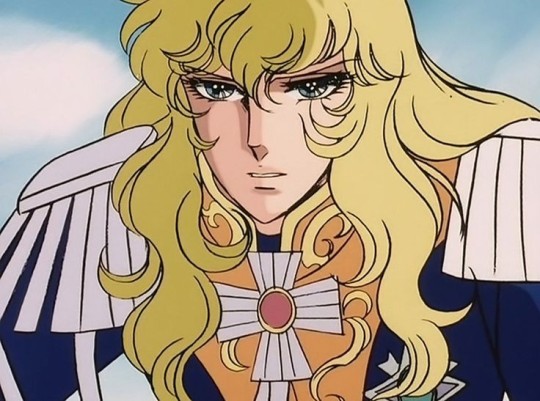
Such a lovely manga/anime series. The story follows the life of a military general's daughter Oscar and Marie Antoinette. Oscar is raised like a boy to succeed her as the commander of the Royal Guards at the Palace of Versailles. The story is set in France before and during the French Revolution.
Perks:
Strong multidimensional female lead
Surprisingly historically accurate
Interestingly captures the large scale of femininity and being a woman
Cool soundtrack
Interesting fact: this anime inspired the makers of Berserk (1997)
Perils:
You'll cry
2. Lady Georgie
(80s)
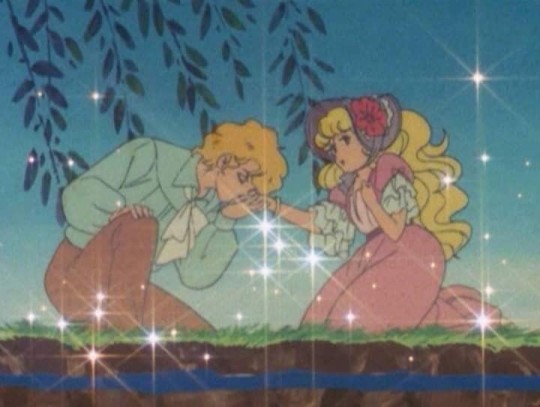
Lady Georgie tells the growth story of a girl named Georgie who lives in peaceful and pittoresque Australian countryside. Georgie doesn't know the secret about her origin while the rest of her family knows it.
Perks:
absolutely endearing setting
the storytelling of their childhood is beyond cuteness
reminded me of the book "The Little Princess" by F. H. Burnett
Perils:
I was a bit weirded out by the love square (?) which included her two adoptive brothers
The ending is not satisfying and the manga is even worse
The love between Georgie and her main love interest is quite bland
3. City Hunter
(mainly 80s)

City Hunter is a humorous anime classic from the 80s. The story focuses on Ryo Saeba, a famous underground sweeper in Shinjuku, and his partner Kaori Makimura. They together help different customers - which are all beautiful women, since Ryo is also well-known for his lecherous habits. Kaori keeps Ryo in check with her hammer.
Perks:
fun anime with a lot of seasons and movies
interesting characters
pictures the city life of Japan in the 80s
Perils:
the love story between Ryo and Kaori is sometimes frustrating
The fetishism of women in almost every episode starts early to feel like a worn joke (notice the time context)
Episodes follow the same plot almost every time, may start to feel repetitive
Tsukasa Hojo, the maker of City Hunter, has also done an another manga named Angel Heart which shares the same characters with City Hunter but isn't it's continuation. I don't yet have a full review of AH, since I'm currently watching it. Thus far, I have cried during every episode, it's good but different. (Please tell me in the comments would you like to have full review of AH)
And a lot more...
There is a lot more retro animes that I didn't mention in this post, like Candy Candy, Cowboy Bebop, Sailor Moon, Utena, Ranma, Akira, Lupin the III, Neon Genesis Evangelion and Berserk (1997). This is just my list of favourites and I hope that you would like to share your favourites in the comments!
With love,
Jessica
29 notes
·
View notes
Text
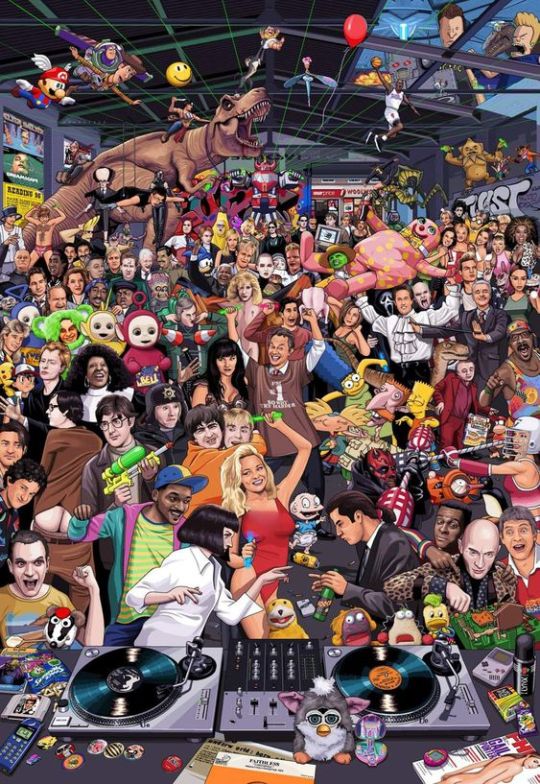
The 1990s was a pivotal decade for geek culture, solidifying many of the trends and franchises that continue to influence pop culture today. Here's an exploration of the various facets of geekdom in the 90s:
Video Games
The 1990s were a golden era for video games, seeing the rise of iconic franchises and gaming consoles.
Consoles and Games:
Super Nintendo Entertainment System (SNES) and Sega Genesis were at the forefront of the early 90s gaming scene. Classics like "The Legend of Zelda: A Link to the Past," "Super Mario World," and "Sonic the Hedgehog" became household names.
The mid-90s introduced the Sony PlayStation and the Nintendo 64. Games like "Final Fantasy VII," "Metal Gear Solid," "Super Mario 64," and "The Legend of Zelda: Ocarina of Time" revolutionized the industry with their storytelling and 3D graphics.
PC Gaming:
The rise of PC gaming brought titles like "Doom," "Quake," "Warcraft," and "Starcraft," which laid the groundwork for modern first-person shooters and real-time strategy games.
The introduction of the CD-ROM allowed for more complex and graphically intense games, expanding the possibilities of game design.
Comic Books and Graphic Novels
The 90s was a transformative period for comics, marked by a combination of innovation and market upheavals.
Marvel and DC Comics:
Marvel experienced a surge in popularity with the introduction of new characters like Deadpool and the significant events like the "X-Men's Age of Apocalypse" and "Spider-Man's Clone Saga."
DC Comics shook the world with storylines such as "The Death of Superman" and "Batman: Knightfall."
Independent Publishers:
The formation of Image Comics by former Marvel artists brought a wave of creator-owned series like "Spawn," "The Savage Dragon," and "WildC.A.T.s."
Vertigo, an imprint of DC, produced critically acclaimed titles such as "Sandman" by Neil Gaiman and "Preacher" by Garth Ennis, pushing the boundaries of mature storytelling in comics.
Science Fiction and Fantasy
The 90s were a golden age for science fiction and fantasy, both in literature and on screen.
Television:
"Star Trek" had a strong presence with "The Next Generation" continuing its success, followed by "Deep Space Nine" and "Voyager."
"The X-Files" became a cultural phenomenon, blending science fiction with horror and conspiracy theories.
"Buffy the Vampire Slayer" redefined the fantasy genre on television, combining teenage drama with supernatural elements.
Movies:
Blockbuster franchises like "Jurassic Park," "The Matrix," and "Men in Black" showcased cutting-edge special effects and imaginative storytelling.
The re-release of the original "Star Wars" trilogy in special editions prepared the groundwork for the much-anticipated prequel trilogy.
Anime and Manga
The 90s saw the global explosion of anime and manga, making Japanese pop culture a mainstream phenomenon.
Anime:
Series like "Dragon Ball Z," "Sailor Moon," and "Pokémon" became immensely popular worldwide, introducing many to the world of anime.
Films by Studio Ghibli, such as "Princess Mononoke" and "My Neighbor Totoro," received critical acclaim and international recognition.
Manga:
Manga series like "Naruto," "One Piece," and "Berserk" began their runs, setting the stage for long-lasting popularity.
The publication of "Shonen Jump" in English brought many of these series to Western audiences.
Role-Playing Games (RPGs)
The 90s were a significant decade for tabletop RPGs, with many classic games being developed and popularized.
Dungeons & Dragons:
The release of the second edition of Advanced Dungeons & Dragons (AD&D) in 1989 carried through the 90s, with campaigns like "Planescape" and "Dark Sun" becoming fan favorites.
Other RPGs:
"Vampire: The Masquerade" by White Wolf Publishing introduced the World of Darkness, a setting that offered a dark, gothic-punk alternative to traditional fantasy RPGs.
The cyberpunk genre was well represented by games like "Shadowrun" and "Cyberpunk 2020," capturing the gritty, high-tech, low-life aesthetic.
Collectibles and Trading Card Games
The 90s witnessed the birth and explosion of collectible card games (CCGs), with "Magic: The Gathering" leading the charge.
Magic: The Gathering:
Created by Richard Garfield and released by Wizards of the Coast in 1993, "Magic: The Gathering" became a groundbreaking and immensely popular game, sparking a new industry of collectible card games.
Pokémon:
The Pokémon Trading Card Game, released in 1996, quickly became a massive hit alongside the video games and TV series, contributing to the global Pokémon craze.
Internet and Technology
The rise of the internet in the 90s played a crucial role in shaping geek culture.
Early Internet Communities:
Bulletin board systems (BBS), forums, and newsgroups like Usenet allowed geeks to connect and share their interests in ways that were never before possible.
The creation of fan sites and the use of IRC (Internet Relay Chat) facilitated the growth of online communities dedicated to various fandoms.
Technology:
The proliferation of personal computers and the advent of the World Wide Web democratized access to information and entertainment, allowing geek culture to flourish and expand globally.
In conclusion, the 1990s were a transformative decade for geek culture, characterized by the rise of influential media, the advent of groundbreaking technology, and the growth of vibrant communities. The era laid the foundation for many of the trends and franchises that continue to shape geekdom today.
#90s tv shows#90s aesthetic#90s fashion#90s anime#90s music#90s nostalgia#1990s#vhs#nineties#90s movies
13 notes
·
View notes
Text
True Otaku
I have not personally been to a convention of the sorts before, yet I have heard how social and fun they can be. Therefore, I have decided to write about the docuseries provided on YouTube, True Otaku. True Otaku explains what it means to be otaku, and what helps drive their passion to being one. This docuseries highlights the dedication, the time, and the passion that anime and manga fans bring to conventions, showing how they connect with the culture. It also explores the impact of said conventions by displaying cosplay and the mechanics behind building their own.
There are three parts to the docuseries. The first part is an introduction to what an otaku is and why the conventions are held. In Japan, the word Otaku often carries a negative connotation of obsessive fandom, but in the United States, it has been embraced by anime enthusiasts as something to be proud of. Also, this part delves into the origins of anime’s popularity in America, highlighting how Dragon Ball, Z, Sailor Moon, and Neon Genesis Evangelion captivated American audiences in the 1990s or early 2000s. Part one wraps up with explaining how anime conventions serve as a hub for Otaku culture. Events like Otakon or anime USA serve as conventions where fans can cosplay, participate in panels, and overall express their love for anime and manga. Attendees share personal stories about their first conventions in the sense of belonging they found within the fandom.
Moving on to part two, this part of the documentary focuses on the sense of community within the otaku culture, particularly through cosplay. Cosplay allows fans to embody their favorite anime, manga, and video game characters through hyper-realistic costumes that often mirror the anime/manga quite well. The video then goes on to follow several dedicated cosplayers as they prepare for conventions detailing the process behind making their costumes and the excitement of performing as their favorite anime character. The cosplayers interviewed in this part discuss how cosplay serves as a form of self-expression. Many describe how dressing up as their favorite characters gives them confidence and helps them connect with others who share similar interests. Also, this part examines the challenges of cosplay, including the time spent, money spent, and skill required to craft these hyper realistic outfits.
The final part focuses on the future of otaku culture in America. Highlighting notable moments in the future of anime would be Crunchyroll and Kissanime, opening the door to anime consumption and making it that much more accessible by making it free and online. Alongside this would include the commercialization of anime as a whole, and the pros and cons that coincide with it. Commercialization helps to publicize anime and make merchandise more available, but this could be an issue with how corporate influence could alter the community-driven experience of going through a convention process, such as personally creating their own merchandise and costumes. The closing moments of the docuseries includes a message inviting people that are curious about otaku culture to celebrate their love for anime however they would please.
True Otaku was an interesting documentary to watch, coming from someone that has never been to an anime convention before. This docuseries emphasizes the profound impact that Japanese media has had on America. Through interviews and personal stories, the film captures what it truly means to be an otaku: someone who finds happiness and friendships through a shared passion for anime and manga.

2 notes
·
View notes
Note
What are some of your favorite manga?
Oh I am all over the place lmao. I don't read much anymore, but I'd like to if I could capture that old nostalgia! I'm annoying and have many favorites <3
First, the obvious: Sailor Moon, Yu Yu Hakusho, and InuYasha. In fact, IY was my entry manga lmao. But! I was also obsessed with CLAMP, like Cardcaptor Sakura, Magic Knight Rayearth, Wish, Angelic Layer. (I did see the Cardcaptor anime first, and the manga came later.)
I was (am?) a hardcore shojo girl. Not because I don't like shonen or anything (YYH still one of my faves of that genre), but because they were short runs. Naruto was just beginning to come out when I was a kid, and it was daunting trying to buy/store that many books. I had Zodiac P.I., Tokyo Mew Mew (and à la Mode), and Natsume's Book of Friends (my one exception to short-runs in shojo I think lmao).
I also somehow got into Zombie-Loan? I'm not sure how that happened. It's not my usual genre and I was a bit put off by some of the things that happened in the first volume but I decided to give the second one a shot and with a little more exposition it became one of my favorites as well.
And! I would be remiss if I did not include my favorite shorter runs: I Am Here! and Genkaku Picasso. I am not kidding when I say both of these manga came into my life when I needed them most. I cried all the way through both of them (they are not sad, they just hit me hard because I was so lonely). They're the only manga I own that I haven't put in storage currently because I'll reread them constantly.
12 notes
·
View notes
Text
The Evolution of Slam Dunk: From Anime to Personal Passion Project

As a child, after finishing school for the day, I would switch on MBC3, a television channel that aired anime. I'd gather with my cousins and we'd watch anime during our pastime together. Among the popular shows like Dragon Ball Z, Beyblade, Sailor Moon, and Yu-Gi-Oh, one that stands out in my memory is Slam Dunk.
The anime adaptation of Slam Dunk ran for 101 episodes, which were based on the manga series written and illustrated by Takehiko Inoue from 1990 to 1996. The story's narratives revolves around Hanamichi Sakuragi, who develops feelings for a girl named Haruko Akagi. Sakuragi decides to join the Shohuku High School Basket Team in an attempt to win her affections.
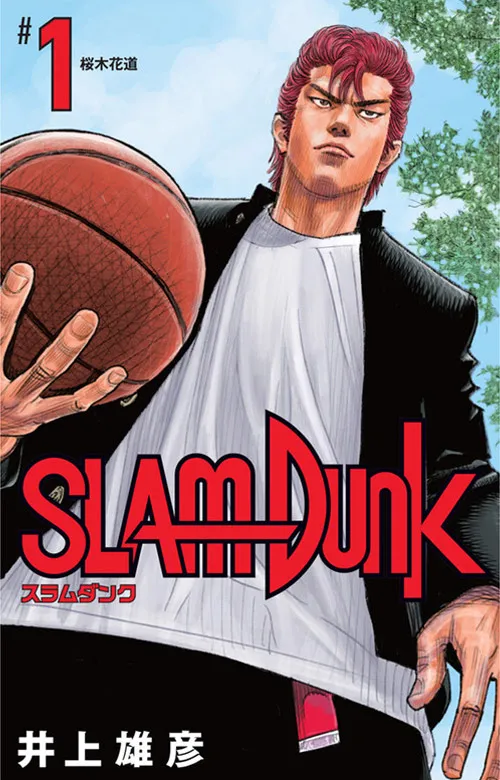
Slam Dunk first volume manga cover, featuring Hanamichi Sakuragi (redesigned)
The First Slam Dunk (2022): An Overview
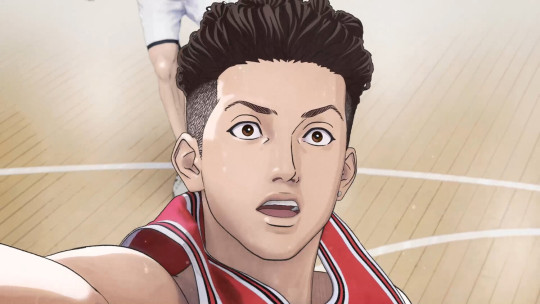
Takehiko Inoue took on the roles of both screenwriter and director for the First Slam Dunk movie, making it a personal passion project. The film picks up where the anime left off, after the climactic match between Shohoku and the Shoyo and Ryonan teams combined. However, rather than focusing on Hanamichi Sakuragi, the protagonist of the original story, the movie shifts its focus to Ryota Miyagi. It follows Miyagi's journey as he navigates the world of basketball, his relationships within the team, and his own personal growth.
The Establishing Shot
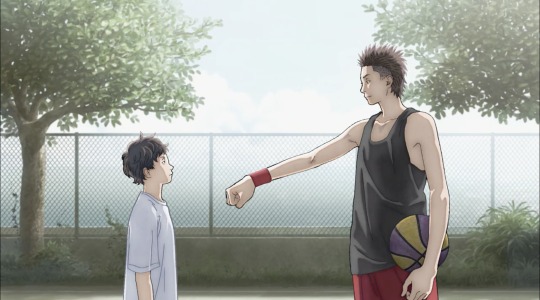
The movie opens with a scene of Ryota engaged in a one-on-one basketball match with his older brother, Shota Miyagi, on a court. The opening scene effectively sets the tone for the film by showcasing the close bond between Ryota and his brother, and illustrates their deep connection to basketball. Despite the scene's initial brightness and joy, it carries a sense of foreboding, hinting at the tragedy to come: Shota's unexpected death.
Following this loss, the movie delves into Ryota's journey of grief and his determination to honor his brother's memory by pursuing basketball.
Throughout the film, we see present-day or specifically courtside scenes intercut with flashbacks to Ryota's childhood, which is heavy with the weight of processing grief. This storytelling technique slows the pace of the film, allowing the emotional impact to unfold and resonate with viewers.
The Film's Animation
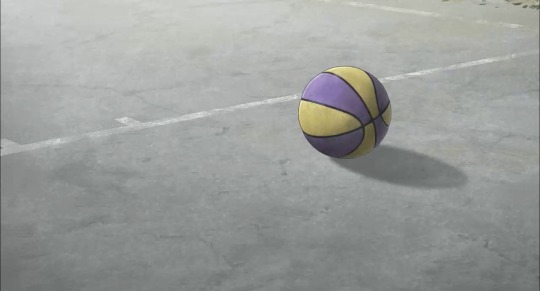


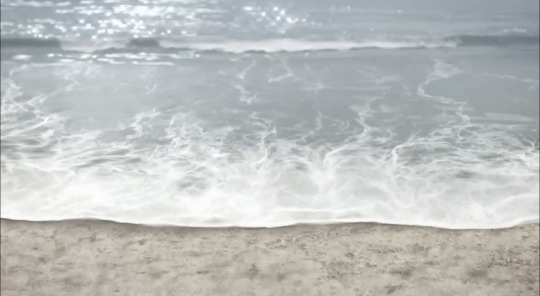
Inoue wanted the movie to capture the essence of the manga, so he chose a light and muted color palette. The film combined 3D CG imagery for basketball scenes mixed with traditional hand-drawn 2D animation for everyday life scenes. Personally, I believe Inoue achieved his goals because as I watched the movie, it felt like the manga illustrations were coming alive. I particularly enjoyed the "watercolor" effect created by the sharp outlines around the characters, and the soft, layered colors.
Lessons Learnt from Shota Miyagi
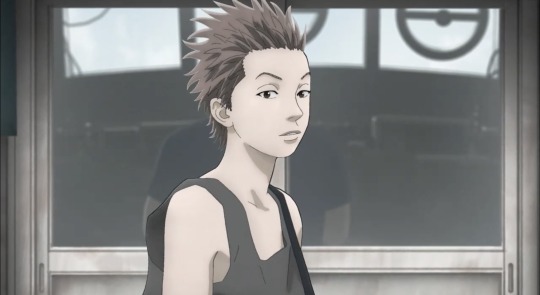
"I’m always like this too, my heart pounds like crazy. That’s why… I have to pretend that I’m fine."
In the opening scene, at the basketball court, Shota is not only teaching Ryota how to play basketball but also valuable life lessons about strength and resilience. In the scenes leading up to this, we witness Shota processing with the loss of his father while also being a support for his mother. Despite his own grief, Shota bravely declares to his mother that he will take on the responsibility of being the head of the household. This display of strength and determination resonates deeply, almost as if Shota is speaking directly to the audience (breaking the fourth wall), urging them to remain steadfast in the face of adversity. His courage serves as an inspiring reminder to stay strong during trying times, no matter how challenging they may seem.
Final Thoughts
"The First Slam Dunk" stands out from other sports and action anime or movies by taking viewers on a journey from pain and trauma to resilience and strength. It blends fast-paced basketball scenes with slow flashbacks, creating tension and anticipation that keeps viewers engaged. When I watched the film in the cinema, I felt inspired and motivated—it made me want to start drawing in my sketchbook right then and there. The movie left a strong impression on me and remains my biggest inspiration for improving my artwork.
It was incredible to see how the narrative shifted from focusing solely on sports and romance in the anime adaptation I watched as a child to a more personal and meaningful message in the movie years later. As the title suggests, Inoue intended for both familiar and unfamiliar audiences to experience it as though it were their first time watching, establishing a different perspective and impact.
10 notes
·
View notes
Text

Ok, so even though Valentine’s Day is over, it’s still Love Month in my mind.
Today I want to share some of my inspirations/influences for my writing and art in terms of romance lit and manga.
Long post is long, so I put it under a Read More below-
Novels:
- Heroes: Saving Charlie by Aury Wallington. I loved the Heroes TV show growing up; it was all about real people suddenly developing superpowers and figuring out how to live their life from that point on.
One story in particular stuck with me. Hiro Nakamura (the time traveler) falls in love with a waitress named Charlie at a diner, but she meets an unfortunate end by the series villain.
So Hiro does something about it: he goes back in time to save her. Over and over and over again. And he falls in love more and more with her each time. That depiction of love and dedication in the face of insurmountable odds has stuck with me all these years later.
I won’t spoil the ending, but man… bring some tissues.
Lisey’s Story by Stephen King: Yes, the irony of seeing a horror author’s name in pink is not lost on me. This one is a dark read, so tread lightly with this one. (If memory serves, there is PLENTY of creepy imagery, one creepy stalker ex, and some brutal injuries.)
Surprise - I love scary stuff. (Hades’s Gambit may have clued you in on that, haha).
This one is a love story told from the wife’s perspective after her husband’s death. Their life together was anything but normal between his fame and his family history. There’s also the little detail that he can travel to an alternate dimension called Boo’ya Moon.
It’s a novel about love and grief, and processing those emotions after the love of one’s life has passed on. I thought the format of telling a life story through memories was quite unique when I read it, too. If you like the dark alongside the light, you might enjoy this one.
*Fun fact: I’ve never read one of those romance novels with the fun spicy covers, but my bestie is a MASSIVE fan of them. I enjoy her comedic retellings so much that I fear the real thing won’t hold up.-
Manga:
Sailor Moon by Naoko Takeuchi: I’m sure this comes as a surprise to absolutely no one. Lol. I love how Usagi and Mamoru’s relationship evolves with time in the manga. I prefer Usagi’s characterization here than the anime tbh - her determination to save as many people as possible and belief that everyone deserves a second chance still impresses me.
And it’s probably obvious in my art, but Naoko’s art style had a HUGE impact on me as a kid, and still does. I picked up a pencil to start drawing when I was a young child because I LOVED the anime. Reading the manga as I got older reinforced that love. I learned to draw eyes, hair, and expressions by observing her work.
Ouran High School Host Club by Bisco Hatori: I loooove the goofy male lead and serious female lead juxtaposition! Tamaki is a himbo but we love him for it. Seeing Tamaki and Haruhi grow together and realize their feelings for each other amongst the chaotic backdrop that is Ouran is delightful. The whole cast is fantastic - the loving sendup of certain manga/anime tropes through their interactions is great. It’s a rom-com heavy on the comedy, and I highly recommend it.
Cardcaptor Sakura by CLAMP: I LOVE SAKURA AND SYAORAN Y’ALL. THEIR RELATIONSHIP IS SO CUTE. The mostly level-headed female lead & silly-when-flustered male lead combo is SO GOOD. And how he (eventually) supports her on her quest to capture the Clow Cards is so sweet.
CLAMP’S art has had a big influence on how I draw hair, as you’ve probably noticed. Lol. I love some flowy detailed hair.
Thanks for listening to me ramble about the things I love! I hope they can bring you some inspiration as well!
💜Tutti
2 notes
·
View notes
Text

"Cosmos," now available for streaming on #Netflix, is a must-see for long-time #SailorMoon fans.
It offers a visually stunning and emotional conclusion to the beloved series. The animation quality and depth surpass other #Anime adaptations like "Eternal," but strict adherence to the original manga results in some underdeveloped plot points and pacing issues. The movie beautifully captures the essence of Sailor Moon's battles and friendships, with standout performances, particularly from Galaxia.
However, its missed opportunities for tighter storytelling may alienate newer audiences. Despite these flaws, "Cosmos" delivers a fitting and heartfelt end to the Sailor Moon saga.
3 notes
·
View notes
Text
Everything You Want to Know About “Kawaii” Culture- Kawaii Fridays
Originally posted to www.onlyfunthings.org on June 01, 2018
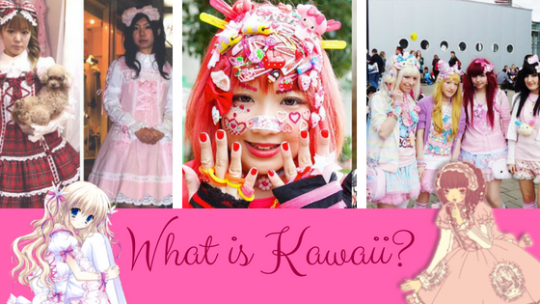
Ciao lovelies, Lunaria here! Today for Kawaii Friday I though I’d make a comprehensive post detailing all you could ever want to know about “kawaii culture”; where it came from, naming some fashions within it (I’ll do more detailed posts on each fashion later), giving some resources on good places to begin reading more/ youtubers to follow/bloggers/Instagrammers, and even telling some about my own personal experiences with kawaii culture.
Personal Experience with Kawaii Culture
As you may have noticed, myself and OFT are highly influenced by Kawaii Culture. Personally, I’ve been into kawaii culture since I was about 13 and a friend told me about Anime, Vocaloids, and the word “Kawaii.” Later I, thanks to the internet, discovered fashions like EGL, Decora, Hime Gyaru, Fairy Kei, and many others. My lifestyle and fashion style were heavily influenced by all these fashions and kawaii culture in general, and reflect these influences.
But enough about me, let’s talk about how it all started!
History of Kawaii
Etymology speaking, the word “Kawaii” is believed to have come from the word “Kawayushi,” a word dating back to the Taisho era (1912-1926) meaning loveable, shy, and small.
A big influence on what is seen as “Kawaii” dates back to the first shoji and kawaii illustrator, Yumeji Takehisa, in 1914. Takehisa merged Eastern and Western art styles in his Chiyogami (flat woodblock print patterns on paper) and used the word “kawaii” to describe them. He was one of the first to use wide, round eyes in his works.
Another big influence on “kawaii” was shojo manga. Shojo Manga (Illustrated stories of a girlish nature), was said to begin with illustrator Katsuji Matsumoto, with the first Shojo manga girl being Kurukuru Kurumi-chan. She had big round eyes and a soft round face. (as seen in the pictures below). Kurumi-Chan was used as a source of encouragement for Japanese people during WW2.
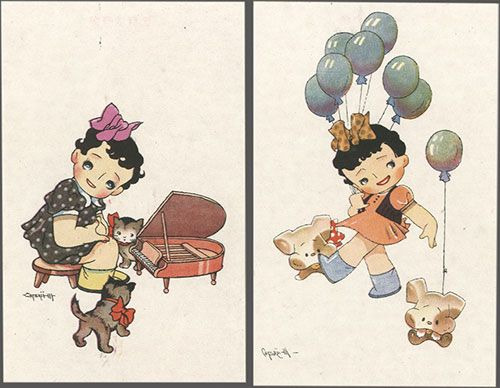
Moving forward into more modern influences, as shojo manga developed we also saw the rise of Mahou Shojo (magical girl) genre of manga and anime. Characters like Sailor Moon brought forth the idea that kawaii could include flaws, and strong girls, but still maintained the air of childish cuteness.

What are some Fashions that are in the Kawaii Culture?
Some fashions in the Kawaii Culture include:
-EGL (Elegant Gothic Lolita). This style has evolved over the years to include Sweet, Sailor, Classic, and many other sub-styles, but it’s root was gothic Lolita fashion. Hence where it gets it’s name. For more info, see THIS post.
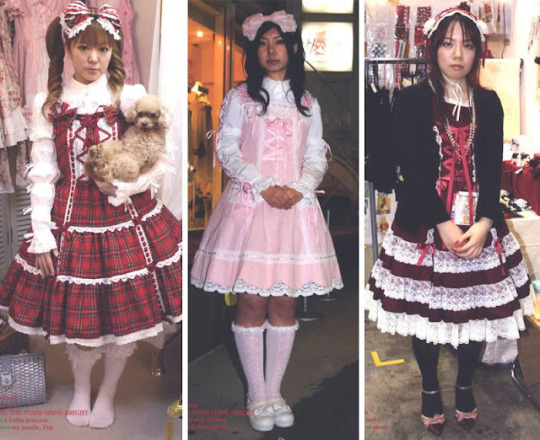
-Decora. A style dedicated to lots and lots of accessorizing.

-Fairy Kei. Lots of sweet pastels and childish themes.
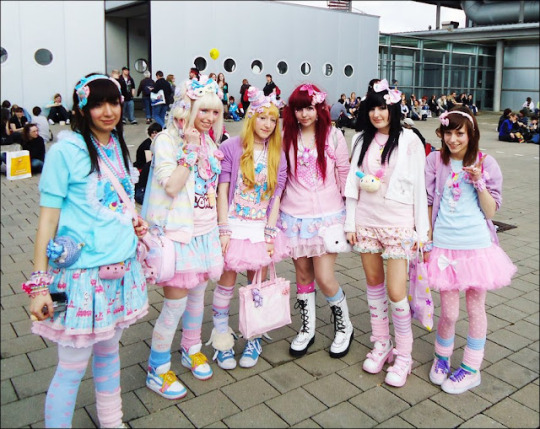
These are pretty central to the Kawaii culture, of course there are more styles, but I’ll get into that later.
Some Good Resources for More Research:
Some Good Bloggers/YouTubers/Instagrammers:
Thanks for reading! I hope you learned a lot about Kawaii Culture today!
Remember to Stay Awesome and Love Yourself!

#agere class#agere classroom#agere daycare#agere school#agere#age regression#sfw agere#sfw littlespace#age regressor#sfw age regression#agereg#age dreaming#sfw little blog#agere blog#Ciao lovelies#agere learning
10 notes
·
View notes
Note
Hey Madoka, have you ever read and/or watched Sailor Moon? if not it comes highly recommended.
Omg I got so many recommendations!! ( ≧ᗜ≦)
Lucky stars is super cute! Fruit basket is ab a fun love triangle! Card capture Sakura is ab a magical girl! Toradora is a romantic! Any season of pretty cure!!Ojamajo Doremi is very cute magical girl show, but sailor moon is in my top ten favorites!!
Wait Sakaya wants to tell hers too lol!
I love school days it’s kinda dark! Same with Higurashi is 100x scarier! Ouran high school host club! But I mostly read manga!
#madoka talks#madoka and Sakaya talk#madoka magica#puella magi madoka magica#pmmm madoka#madoka kaname#madoka kamane#pmmm
15 notes
·
View notes